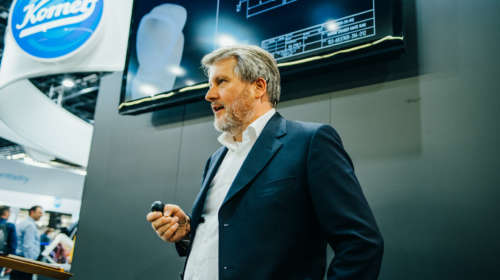Retentive crowns and preparation of bridge abutments.
Predictable results with the right instruments
Dr. Jan Hajtó takes us on a journey into his world of all-ceramic restorations. He focuses on the intelligent preparation of teeth prior to placing cementable restorations (e.g. made of zirconium oxide) that owe their firm hold to a perfect retention. Undesirable loosening of crowns and bridges is prevented by a suitable geometric design and a sufficiently retentive shape. Dr. Hajtó’s motto: The preparation design – a decisive factor for long-term success – is in the hands of the dentist alone.
All-ceramic restorations and a perfect balance
During the preparation of teeth, various factors appear to collide. On the one hand, as little dental substance as possible should be removed. On the other hand, a retentive geometry has to be created while ensuring that a sufficiently thick layer of material is retained. Undercuts have to be avoided, as does a strongly tapered shape of the tooth (preparation angle between 3° and 6°). Further essential factors to be observed are the creation of a chamfer – absolutely obligatory when it comes to cementing restorations – and an anatomically reduced tooth shape. Jan Hajtó shows that these numerous requirements that appear contradictory at first are not paradox at all. All these apparent challenges can be solved at the practice with relative ease, as he illustrates with the help of 3D diagrams.
Retention – 100 % mastered!
Retention depends on four essential factors: The length and the width of the crown core, the preparation angle and the size of the cement joint. A “good” retention only requires a slightly tapered geometry and a pronounced cervical step. In the molar region, retention grooves are often recommended, whereas in front teeth, a palatal step can serve as an additional safeguard against undesirable tilting. To ensure a perfect balance between adequate substance removal and conservation of the healthy tooth substance, the rotary instruments used during the treatment automatically double as measuring tools.
Systematic procedure for consistently good preparations
Every preparation is the negative of the rotary instrument used for its creation. Dr. Hajtó advocates preparations according to tried and tested protocols. His approach: Initial preparation with a cylindrical instrument, a short cylinder for occlusal grinding, post-preparation with a tapered finisher and rounding of the edges with a flexible disc. The result: A retentive preparation with a beautiful chamfer, an even layer thickness and a slightly tapered geometry.
Do it like the experts do! Create preparations of consistently high, reproducible quality with the expert set 4573 and 4573ST (stainless bur block) for all-ceramic crown preparations.
